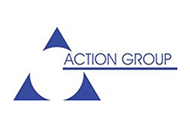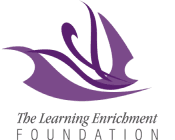Gary (Sparkrock):
Hello everyone, and thank you very much for joining our live webinar,
“Enhancing Nonprofit Operations Through Integrated HR, Payroll, and Scheduling Solutions.”
We’re glad to see so many of you here today—and I can also see that many of you attended our first two webinars. Thank you again for being part of this series!
Today’s session is the third and final part of our webinar series:
- Session 1 focused on de-risking nonprofit technology platforms and improving employee happiness and effectiveness.
- Session 2 was all about empowering nonprofits with key finance features to overcome industry challenges.
- And today’s webinar will focus on improving nonprofit operations through integrated HR, payroll, and scheduling solutions.
As always, our goal is to share insights and knowledge that can empower your organization to work more efficiently and make a bigger impact.
For those who don’t know me yet, my name is Gary.
I’m a Senior ERP Executive at Sparkrock. I’ve worked in the ERP space for over a decade—supporting both nonprofit and for-profit organizations in finding the right solutions to automate key processes across finance, HR, and payroll.
The more I worked with nonprofits, the more I wanted to dedicate my focus to serving mission-driven organizations. That’s what brought me to Sparkrock. They gave me the opportunity to do just that.
As you know, Sparkrock is a Microsoft partner—and we work closely with the Microsoft Tech for Social Impact team.
I’d like to take a moment to recognize the important work Microsoft is doing through this initiative.
The Tech for Social Impact (TSI) business unit was launched in 2017, but Microsoft’s commitment to supporting nonprofits goes back much further. The goal of TSI is to empower nonprofits around the world by making enterprise-level technology accessible and affordable.
They do this through grants and discounted licenses for products like Microsoft Office, Teams, Dynamics 365, and more. Today, over 300,000 nonprofit organizations globally are using Microsoft Cloud solutions—so we want to acknowledge and applaud their impact.
So how do Sparkrock and Microsoft work together?
If you’ve attended one of our earlier webinars, you’ve probably heard a bit about Sparkrock already. But for those who are new, let me give you a quick overview.
Sparkrock was founded in 2003—so we’ve just celebrated our 20th anniversary. From day one, we’ve partnered closely with Microsoft through their embedded program.
Now, most people don’t think of ERP when they think of Microsoft—but Microsoft has been in the ERP business for over 30 years. As Microsoft evolved through cloud innovation and security investment, so did we.
Today, Sparkrock 365 is built on top of Microsoft Dynamics 365 Business Central, which is a robust and proven ERP solution. However, Business Central was built for for-profit organizations—which means that on its own, it’s missing some key features that nonprofit and human services organizations need.
We’re talking about requirements like:
- Invoice approvals
- Fund management
- Grant accounting
- Complex regulatory and board reporting
These needs are critical for nonprofits, but they’re often not built into standard for-profit ERP systems. As a result, many nonprofits end up implementing manual workarounds that waste time and create risk.
Before Sparkrock, nonprofits had to choose between two imperfect options:
- Use well-established ERP systems designed for businesses—but deal with missing features, complex customizations, and manual processes.
- Choose nonprofit-specific tools that lack the maturity, robustness, and security of enterprise platforms.
Neither of those is ideal.
That’s where Sparkrock comes in.
We combine the stability and scale of Microsoft’s infrastructure with 20+ years of nonprofit expertise. Our solution layers nonprofit-specific functionality on top of Microsoft’s cloud ERP—giving you the best of both worlds.
You're not just getting a secure, scalable platform—you’re also getting features tailored to your sector, like integrated payroll, scheduling, expense approvals, HR workflows, and more.
And since it’s all built on Microsoft, you benefit from continuous investments in security, privacy, mobility, and interoperability. Sparkrock integrates seamlessly with the Microsoft tools you already use—like Outlook, Teams, Office 365, and Azure.
Before I hand it over to James to walk through the demo, I want to share a quick customer story.
Let’s talk about Rehoboth Christian Ministries.
They were founded in 1976 as a single camp supporting individuals with disabilities. Today, they operate five regional offices, support over 50 group homes across Alberta, and successfully use Sparkrock 365 to manage their finance, HR, scheduling, and payroll.
But before switching to Sparkrock, they faced several challenges:
- Their finance, HR, and payroll departments were overwhelmed with manual tasks.
- They used disconnected systems, which made reporting difficult.
- Payroll took 2–3 days to complete due to paper timesheets and manual Excel uploads.
- There was no scheduling solution in place.
- Compliance reporting was time-intensive and error-prone—especially for things like source deduction filings.
At one point, they even faced penalties due to missed filings—a risk many of you can probably relate to.
When your software limits your compliance, your ability to deliver on your mission—and use your budget effectively—is at risk.
I’ll now pass it over to James, who will take us through how integrated HR, payroll, and scheduling can address these exact challenges.
James (Sparkrock):
One of the major challenges Rehoboth Christian Ministries faced was visibility—
Visibility into budgets, schedules, volunteer hours, and attendance management.
They also had over $1 million in vacation liability, and ensuring employees used their vacation time appropriately became a huge priority for their Board of Directors.
With all of these challenges, it became clear that their existing systems would not scale. Their top priority was to find an ERP solution that could integrate Finance, HR, Scheduling, and Payroll—while reducing manual calculations and human intervention.
So what did they do?
They issued an RFP and evaluated five different ERP solutions. In the end, Sparkrock was able to provide everything Rehoboth Christian Ministries needed.
They chose Sparkrock not only because we provide a fully integrated solution—covering Finance, HR, Scheduling, and Payroll—but also because of our strong partnership with Microsoft. That partnership enabled them to integrate easily with Microsoft 365 applications like Outlook for email and Power BI for advanced reporting.
For those of you who may not be familiar, Power BI is Microsoft’s data visualization platform. It enables powerful reporting and dashboard capabilities.
Before Sparkrock,
Rehoboth’s finance team spent hours manually compiling reports. They were buried in administrative tasks instead of focusing on strategic goals.
After implementing Sparkrock 365 and Power BI,
- Reports are now generated automatically.
- Quarterly board reports and bi-monthly financial statements are delivered on time.
- Management has clear visibility into key data like budget tracking, volunteer hours, scheduling, and attendance.
- Payroll is timely and accurate.
- Source deduction filings are submitted on time—eliminating penalties and fines.
The result?
Time saved, money saved, and better care for their community.
This is the kind of partnership we’re extremely proud of. And it shows just how impactful the right solution can be for a nonprofit.
If you're interested in learning more about Rehoboth’s story and how time entry and scheduling helped transform their operations, we’ve recorded a webinar with their team. We'll be sharing that link with you after the session, and we highly encourage you to check it out.
Now that you have a better idea of who we are and what we do, I’m going to hand things over to our Senior Product Consultant, James, who will walk you through how nonprofits can improve their operations through integrated HR, payroll, and scheduling solutions.
James (Sparkrock):
Thank you very much, Gary. And hello everyone—my name is James.
I’ve spent over 25 years working with nonprofits and helping organizations make thoughtful, informed technology decisions.
I’ve worked in various roles including implementation, support, product development, and now I focus primarily on helping organizations evaluate whether Sparkrock 365 is the right fit for them.
Since this is the third and final webinar in our series, I want to begin with a quick recap of what we covered in the earlier sessions:
- Webinar 1 focused on reducing cyber risk by choosing a true cloud-based SaaS ERP. We talked about the importance of cloud security, improved audit outcomes, and how Microsoft’s platform—Azure, Office 365, Outlook—creates a seamless, familiar experience for users.
- We also emphasized the value of integration, and how limited IT resources in nonprofits make it especially important to reduce complexity and eliminate disconnected systems.
- Webinar 2 was all about financial functionality—real-time budget checking, automated approval workflows, and compliance with internal policies.
- We demonstrated how these tools improve both audit preparedness and team efficiency.
- Finally, we showed how data-driven decision-making becomes possible when you empower your staff with Power BI dashboards and analytics reports.
If you missed either of those sessions, I encourage you to watch the recordings or share them with colleagues in IT or Finance.
Now let’s dive into today’s focus areas: HR, Payroll, and Scheduling.
In our experience, nonprofits face some very specific challenges in these areas—and today we’ll spotlight key features that can help you overcome them.
We’ll walk through how:
- Integrating key systems improves operational visibility
- Fully integrated scheduling boosts employee experience and team efficiency
- HR and payroll automation reduces risk and frees up valuable time
Let’s start with our first theme:
Theme 1: Integration for Seamless Workflows
Nonprofit organizations are often forced to use multiple applications to manage essential functions—Finance, HR, Payroll, Scheduling. When core data lives in disconnected systems, it leads to siloed information, redundant data entry, and frequent errors.
Let’s take a few examples of this key data:
- Employee Information: Often stored in separate HR, payroll, scheduling, and finance systems
- Departments, Grants, Programs, and Cost Centers: Usually created in Finance, but needed everywhere else (e.g., timesheets, HR records, scheduling tools)
Common symptoms of disconnected systems include:
- Data mismatches and errors
- Re-entering the same employee or program in multiple systems
- Wasted time reconciling reports
- Confusion around which version of data is “correct”
Let’s be honest—setting up a new employee or cost center in multiple platforms isn’t just annoying; it’s risky. And it takes your staff away from more important work.
Another issue with disconnected systems is the inefficiency and risk involved in reconciling data.
Let’s say a cost center was set up slightly differently in payroll versus finance—maybe the codes don’t match. Suddenly, when you try to import data, it fails. This creates hours of frustrating and time-consuming reconciliation efforts just to get your systems aligned again.
So what happens when all four systems—Finance, HR, Payroll, and Scheduling—are fully integrated?
Let’s take a look at Sparkrock 365 and what that reality looks like in practice.
What you’re seeing here is the Human Resources Role Center. Think of a Role Center as a personalized homepage or dashboard, tailored to a specific role. In this case, we’re looking through the lens of an HR Manager.
Right when I log in, I see:
- Navigation links to all my HR tasks
- Reminders about overdue appraisals, expiring qualifications, or pending HR activities
- Dashboards and embedded Power BI reports—giving me insight at a glance
And because everything is part of a single system, I can do more than just HR tasks.
For example, if I have the right permissions, I can drill into financial data. I can open the chart of accounts, look at salary-related expenses, and even explore actual transactions tied to those accounts.
Let’s walk through an example:
I click into a salary or benefits account →
Drill down into the actual transaction →
Now I can see:
- Transaction date
- Employee number
- Payroll type (e.g., earnings or deductions)
- Pay period
- User ID of the person who posted the entry
This is real-time financial visibility, even from an HR perspective—without needing to bounce between disconnected systems.
Another powerful feature is Find Entries.
Let’s say I want to trace the full audit trail of a single transaction. With one click, I can see:
- General ledger entries
- Payroll ledger entries
- Check ledger entries
- Deduction entries
- Source documents
Each of these is fully traceable, drillable, and connected. I can view paycheck-level details, see how deductions were calculated, and verify which accounts were impacted—all in one place.
Without this kind of integration, you’d have to manually reconcile multiple systems, and even then you may only have summary-level data in your GL.
That’s the difference: Sparkrock 365 gives you complete auditability and granular traceability—without the headaches.
It doesn’t stop at payroll.
Let’s say your finance team sets up a new cost center, program, or funding source. In Sparkrock 365, that’s done through something called dimensions. Once it’s created in finance, it’s immediately available in HR, payroll, and scheduling—no duplicate setup required.
Here’s a practical example:
If I’m setting up a new position for a case manager funded by a new grant, I can:
- Open the Positions area
- Copy from an existing job
- Select the appropriate GL account, department, program, or grant code from the dropdown
- Save
Now, anyone hired into that position will automatically inherit the correct coding. It’s clean, accurate, and instantly usable across the system.
This same logic applies to time coding for employees as well. When staff enter hours, those hours automatically tie back to the correct fund, program, or grant—no additional mapping or manual adjustment needed.
If I need to assign a new activity—whether it's a grant, department, or cost center—I can immediately make it available for employees to tag their time against, the moment it's been created.
With this kind of structure, we eliminate a common pain point: someone coding their time to a value that hasn’t yet been created in the general ledger. In other systems, you'd only discover that mismatch when trying to post payroll or generate a report, causing frustration and delays. But because Sparkrock 365 is a single, fully integrated system, that issue disappears entirely.
So, to summarize:
- All reconciliation and synchronization efforts are eliminated
- Errors caused by disconnected systems no longer occur
- Everyone—from finance to payroll to HR—is working from the same live dataset
Let’s shift gears now to our second major theme: Streamlining Staff Scheduling
In service-driven nonprofits—whether residential programs, day programs, or a mix—scheduling is often one of the biggest operational headaches.
When you’re running multiple programs across different locations, with staff supporting multiple roles, things get complex quickly. Add in sick days, vacation, training, and part-time split roles, and you’re dealing with exponential complexity.
Here are some common symptoms that an organization doesn’t have the right tools in place:
- Program disruptions caused by staff absences due to illness or vacation
- Gaps in coverage when staff are pulled away for training but not reflected in the schedule
- Overtime expenses from last-minute scheduling decisions
- Scheduling conflicts where the same staff member is booked in two programs at once
These are all preventable—but only with the right system.
Let’s look at how Sparkrock 365 addresses this.
I’m now logged into the Employee Self-Service portal in Sparkrock 365, and I’m navigating to the Schedulingsection.
I’ll start by opening a Unit Schedule—this view allows me, as either a supervisor or team member, to see who else is working on my unit today. You can restrict this view so users only see their own schedule, or open it up to allow visibility of the full team.
What you’re seeing here is the Agenda View—this is a linear view of dates and shifts. There’s also a full calendar view (day, week, or month) available, depending on your preference.
In this view, I can easily filter for pending or vacant shifts. For example, today I can see there are a few shifts that haven’t yet been filled.
Let’s say I’m trying to fill one of these vacant shifts for tomorrow:
- I click on the shift
- If I already know who’s taking it (maybe we arranged it offline), I simply select Fill and assign the person
- If I want to offer it to multiple people, the system helps me find the right fit
Here’s where the real power of integration shows up:
The system checks all relevant availability criteria before suggesting a staff member:
- Are they already scheduled to work elsewhere?
- Have they called in sick?
- Are they on vacation?
- Are they attending a training session?
- Do they have the required qualifications?
Let’s say the only person available is Kristen W.. When I select her, the system warns me: assigning this shift will put her into overtime. It even highlights her target hours and alerts me if this assignment exceeds them.
I can also see:
- Her prior shifts
- Any consecutive shifts
- When she was last offered a shift
- Contact info and certifications (if this is a shift requiring specific training)
This makes it incredibly easy to make informed, compliant, and efficient staffing decisions—without the usual chaos.
If that first list of available staff isn’t sufficient, I can widen the search. For example, I can choose to view all positionsand see if someone from another role might be able to pick up the shift. Even if it doesn’t make perfect sense—for example, offering a lifeguard shift to a cook—it’s useful if there’s any crossover in duties or emergency needs.
In this example, I’ve selected three additional individuals, and I can offer the shift to all of them at once. The system immediately notifies those three users, and I can track who it’s been offered to. Once the shift is offered, each person has the opportunity to accept it right away through the system.
Let me show you another scheduling alert. I’m looking at a shift for Ramone and notice a red error flag. When I hover, I can see the issue: one of Ramone’s earlier shifts was extended, and now it overlaps with a second shift. The system is flagging that error automatically.
It’s also warning me that assigning both shifts would exceed the maximum daily hours—either due to internal policy or regulatory limits. These kinds of rules are baked into the scheduling engine, helping to prevent accidental violations of labor standards or fatigue-inducing schedules.
Now let’s shift over to Absence Management, which is also integrated into Sparkrock 365.
From here, I can view my available leave balances (vacation, sick days, etc.) and see them plotted on a calendar.
If I want to book some time off—for example, from October 31 to November 3—the system will scan my existing schedule and flag any conflicts. That’s especially important in nonprofits, where staffing is tightly tied to programming.
If I have shifts booked during the requested time, Sparkrock 365 will:
- Alert me to the conflict
- Flag those shifts as vacant once my leave is approved
- Feed that data into the Shift Bidding system (where employees can claim available shifts)
This kind of real-time, integrated planning improves team coordination, reduces coverage issues, and gives administrators and staff better visibility.
Also worth noting: approved timesheets from scheduling are fed directly into payroll—no double entry or data rekeying required.
Let’s move into our third theme: Managing Employee Changes with HR Requests
Nonprofit HR staff and managers are constantly juggling priorities. You're running programs, overseeing staff, and trying to stay on top of administrative tasks. One area that often slips through the cracks is managing employee-related changes—whether it's onboarding, position changes, or tracking qualifications.
Common issues in organizations without the right tools include:
- Manual or email-based approvals for new hires
- HR and IT staff updating multiple disconnected systems (spreadsheets, payroll, IT access, etc.)
- Employees getting set up after they've already started, resulting in delayed pay or access
- Inconsistencies and human errors that cause compliance or audit issues
All of this can be time-consuming, stressful, and potentially damaging to employee trust and organizational reputation.
The Solution: Automated HR Workflows
Let’s look at how Sparkrock 365 handles this through the HR Requests module.
This is where all significant employee changes are initiated and tracked. That includes:
- New hires
- Position transfers
- Compensation updates
- Role changes
Requests can be initiated by HR, by a hiring manager, or by another authorized person, depending on your internal structure.
Let’s say I’m hiring a new team member—Alexander. I’ve already filled in some basic information (name, address, hire date), and now I’ll choose the Position Code: Case Manager.
Once I select the position, Sparkrock 365 automatically:
- Fills in salary grid and compensation details
- Applies benefits, allowances, and role-specific configurations
- Associates relevant dimensions (like department, cost center, or grant)
For example, because Alexander is coming in with more experience, I bumped him up to Step 2 on the pay grid. You’ll notice the system immediately updates the compensation rate. And beyond that, it auto-fills other critical data—benefits, allocations, experience, allowances, and more.
All I had to do was:
- Select the Case Manager position
- Update the step on the pay grid
- Fill in some basic personal details
Everything else is populated automatically.
Once the necessary approvals are in place, I can click “Process All Steps”, and Sparkrock 365 will handle the rest.
If I select “Process Individual Steps”, I can see each action the system is completing:
- Creates the employee record
- Inserts email
- Sets up the self-service portal
- Assigns to the right scheduling unit
- Applies deductions, union info, tasks, qualifications, benefits, appraisals
- Issues onboarding tasks to the right people (manager, HR, payroll)
These tasks show up directly in dashboards and trigger email reminders to ensure nothing is missed.
In short, Sparkrock 365 replaces scattered lists, spreadsheets, and emails with a centralized, automated workflow, dramatically reducing stress and errors for everyone involved.
Recap of Key Themes
Let’s quickly recap the three key themes we covered:
- Integration across systems eliminates manual reconciliation and data entry.
- Integrated scheduling improves staffing efficiency and prevents errors like double-booking or unfilled shifts.
- HR Requests and automation ensure consistent policy enforcement and reduce employee onboarding errors.
All of this reduces operational friction, boosts transparency, and improves employee satisfaction.
HR Health Assessment
Sometimes, even if the value of integration is clear to you, it can be hard to convey that value internally.
That’s why we’ve created a simple HR Health Assessment—a tool to help you and your team evaluate where your organization stands.
It includes just four short questions. You score each answer (yes = 0, no = 5), tally the total, and it provides a quick snapshot of your current state along with suggested next steps.
We’ll send this spreadsheet to you after the webinar. And if you'd like help walking through it or interpreting the results, feel free to reach out to us.
Q&A Session
Gary: Thanks, James. Now let’s move into the Q&A portion of today’s webinar.
If you haven’t already, use the Q&A function at the top right of your console. We’ve already received a few great questions.
Q1: I’m a current user of GP on-prem and use the integrated payroll solution. Can this project replace everything that GP does?
Gary: Just to clarify, GP refers to Microsoft Dynamics Great Plains. It comes up a lot in these webinars because Sparkrock is a logical next step for many organizations moving off GP.
James: That’s right. Dynamics GP is actually the most common system we've migrated customers from. Sparkrock 365 offers a fully integrated HR and payroll solution, and in almost every case, the capabilities exceed what GP provides.
While there may be some variation based on your GP setup or add-ons, we’re confident Sparkrock 365 is a solid and comprehensive replacement—and we’d be happy to do a deeper review with your team.
Q2: Does your scheduling app support multiple locations and programs? Can approvers vary by location or program?
James: Great question. Yes, absolutely.
We use something called a Scheduling Unit, which typically represents a physical location or program. You can schedule a staff member for a morning shift in one program and an afternoon shift in another, even at the same location.
If you want different approval workflows, we simply set up each program as a separate unit. There’s no limit to the number of units, and the system keeps track of where each employee is scheduled, ensuring they’re not double-booked.
Q3: What does the integration between payroll and the general ledger look like? Do I have to rekey journal entries?
James: No rekeying required.
If you’re using our integrated payroll module, journal entries are created automatically and posted in detail. You can still summarize them for reporting, but the detail remains available.
With the right permissions, users can even drill down to see the originating employee transaction, timesheets, or deduction details. It’s all traceable and audit-friendly.
Q4: How long does it take to implement Sparkrock 365?
Gary: The honest answer is: it depends.
Implementation timelines are influenced by:
- Your organization’s size and complexity
- The modules you choose (Finance, HR, Payroll, Scheduling, etc.)
- The number of integrations with third-party tools
- Customization and data migration requirements
That said, the typical implementation takes 7 to 8 months. But we always perform a tailored assessment to give you a more precise timeline.
Final Notes and Resources
This concludes our Q&A session. As mentioned earlier:
- We’ll follow up with the HR Assessment tool
- You’ll receive a link to the webinar recording
- We’ll also share the Rehoboth Christian Ministries webinar on scheduling and time entry
This was the last in our three-part nonprofit webinar series. If you missed any earlier sessions, we strongly recommend watching the recordings. Each one includes a tailored self-assessment to help you evaluate your current state and next steps.
If you have questions or want to discuss your specific needs, please contact us at:
connect@sparkrock.com
Thank you again for joining us. We hope this was helpful and look forward to supporting your organization’s journey.
Cheers!

%20(3).png?width=150&height=150&name=Gary%20(2)%20(3).png)




.png)




